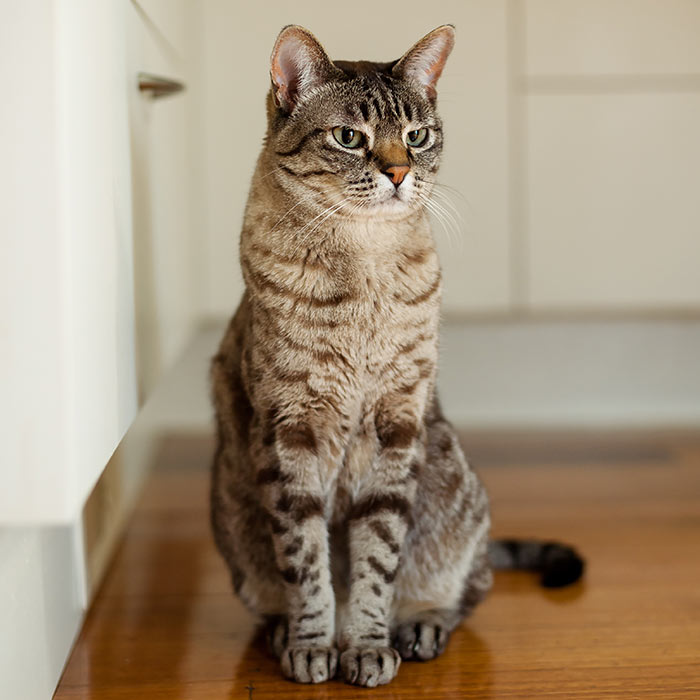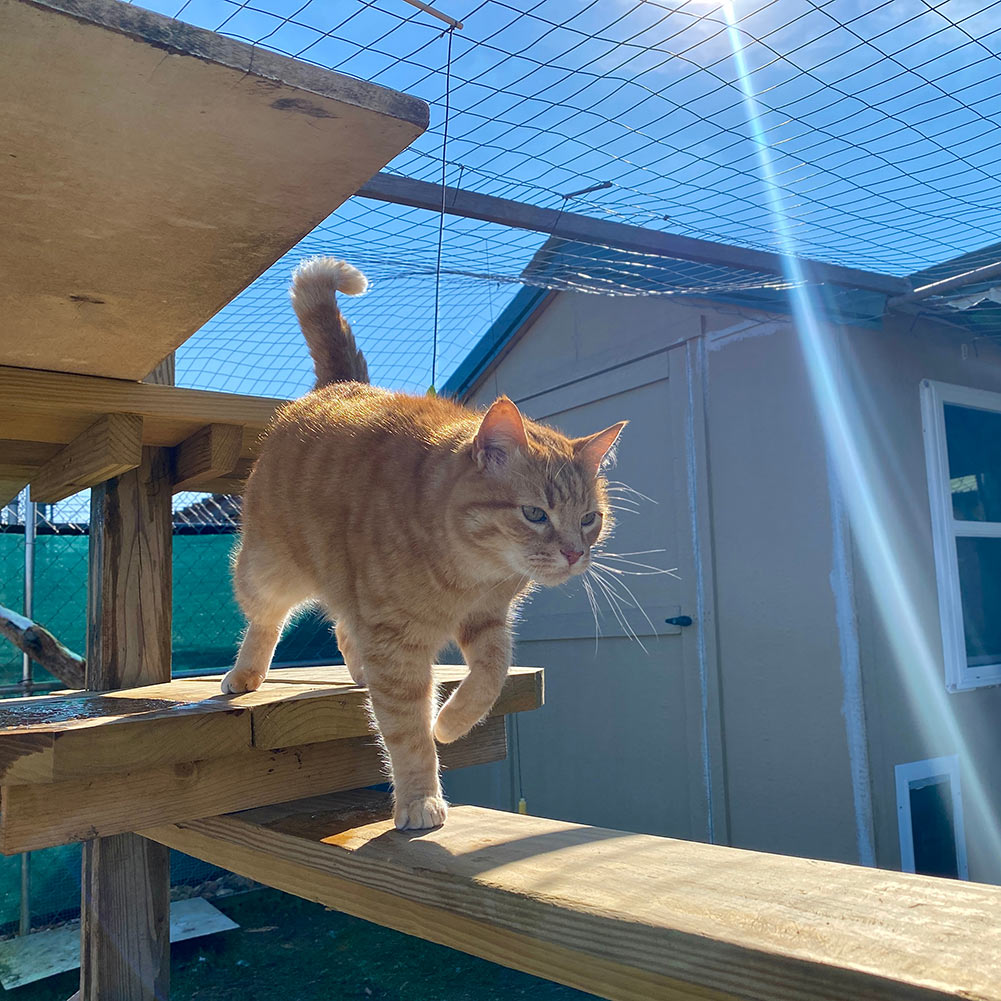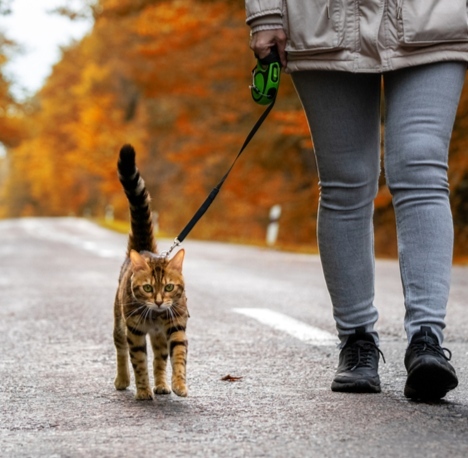The secret lives of cats – What kitty gets up to when home alone
Ever wondered what exactly your indoor cat gets up to when she’s home alone? Does she spend her time grooming, exploring her surroundings, mock-hunting, or playing with a favourite toy? Perhaps she bats at sunbeams or squirrels away in a cozy spot. Or she may do none of these at all and simply nap the day away!
 Cats are independent and curious animals that can certainly entertain themselves when alone at home, particularly if they have a stimulating environment and you’ve left some enticing items about. Every cat is different, so exactly what your cat gets up to when you’re out the house will depend on her personality and the options that are available to her. But we do have a pretty good idea of the types of things your kitty might get up to when she has the run of the house or living area!
Cats are independent and curious animals that can certainly entertain themselves when alone at home, particularly if they have a stimulating environment and you’ve left some enticing items about. Every cat is different, so exactly what your cat gets up to when you’re out the house will depend on her personality and the options that are available to her. But we do have a pretty good idea of the types of things your kitty might get up to when she has the run of the house or living area!
10 things your cat may do while you’re out
1. Harmless hunting
Cats have a natural instinct to hunt and they often engage in play-hunting behaviour to hone their skills and amuse themselves. When alone at home, they may entertain themselves by “hunting” toys that mimic prey, such as toy mice or laser pointers.
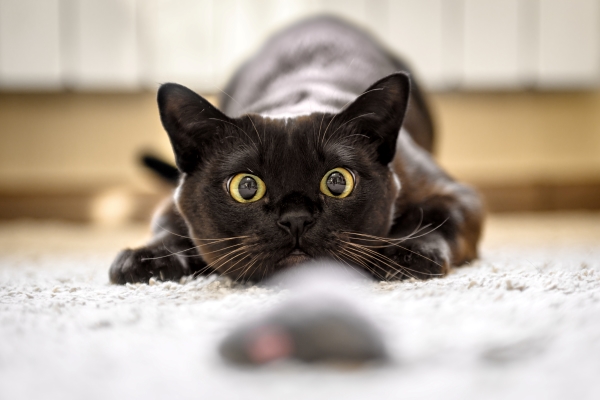
They may chase and stalk shadows and small moving objects around the house, bat around small objects like balls or feathers and even chase their own tail. They may crouch down, wiggle their hind end, and then pounce onto their ‘prey’. Once they have caught their ‘prey’, they may simulate the killing process by biting and shaking the toy or object.
- DO encourage play-hunting activity while your cat is alone by providing a variety of safe toys and items that initiate hunting behaviour, such as laser beams and puzzle feeders.
- DO hide cat-friendly objects around the house for them to hunt, such as toy mice, balls or stuffed animals. Catnip filled toys and food-dispensing toys are also great options.
- DON’T leave out toys designed for supervised play, such as feather wands and fishing poles, as they may accidentally ingest small parts of these toys.
- DON’T leave your shoes, slippers or clothing lying about in case they think these items are ‘fair game’!
2. Intrepid exploring
Cats are notoriously curious creatures (hence the old saying!) and unsurprisingly, many of them enjoy exploring their environment. In the wild, cats explore their surroundings to establish their territory and to find food and shelter. Domesticated cats explore in order to discover new things, satisfy their hunting instincts and keep their mind and body active.
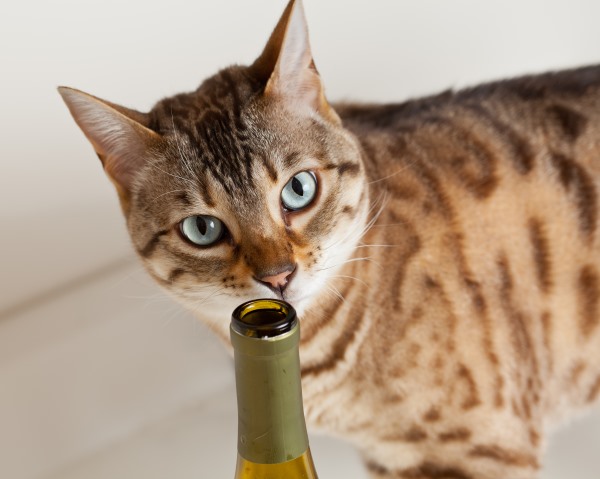
- DO provide your cat with a stimulating environment containing plenty of things to explore, such as hiding spots, scratching posts, interactive toys, perches at different heights and windows to look out.
- DO have some pot plants containing feline-friendly plants that cats like to nibble on, such as cat grass, catnip or cat mint.
- DON’T have plants in the home that are toxic to cats, particularly lilies. For more information, see the Cat Protection Society’s factsheet on Flowers.
3. Window watching
Cats enjoy looking at a variety of things, but as natural hunters, their eyes are particularly drawn to movement. For this reason, many cats really enjoy looking out of windows, and they may spend hours watching birds or other animals outside, trees and plants blowing in the wind or raindrops falling. They are also attracted to light, and may happily watch sunbeams and reflections playing on the glass window panes.

Providing access to a variety of interesting sights can help to keep your cat mentally stimulated and engaged. However, different cats have different preferences, so it may take some trial and error to find out what your cat likes to spend her time looking at.
- DO place perches and raised beds near windows with natural light and/or a view of the outside world.
- DO try leaving a mirror or other shiny surface accessible, as she may spend time looking at herself.
- DON’T leave her alone for lengthy periods in a dark house with the curtains drawn or blinds shuttered.
4. Cat napping
Cats are most active during dawn and dusk and they often spend the majority of their daylight hours lounging or dozing. Felines are known for being big sleepers – often up to 16 hours a day – so don’t worry too much if your cat appears to do nothing but nap while you are out. On the other hand, she may be one of those cats who sleeps mostly at night and only has a few short naps during the day.
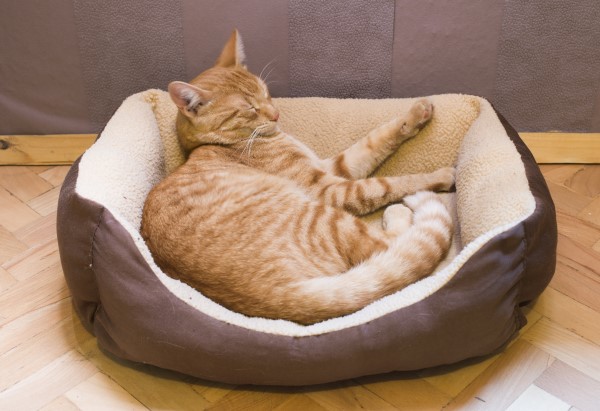
Cats are inclined to finding cozy and comfortable places to take a nap. They often choose warm and sunny spots, such as windowsills or on top of clothes dryers! Or, they may have a preference for soft, snuggly places like beds or cushions, or enclosed spaces like under beds or in closets. Some prefer napping in elevated spots, for example, on top of shelves or in cat trees.
- DO provide a variety of comfortable napping spots throughout the house so that your cat has plenty of options to choose from.
- DON’T spend a fortune on fancy cat beds. Some cats will ignore these in favour of a laundry basket or cardboard box!
5. Soothing grooming
Grooming is an important part of a cat’s daily routine and they may spend a significant amount of time on it – typically from around 30 minutes up to several hours per day. Grooming serves a number of purposes; most obviously it helps cats to keep their coats clean and free of debris. Their rough tongues have small barbs on them that help to remove dirt and loose hair, while also distributing the natural oils in their fur that keeps their coats healthy and shiny.
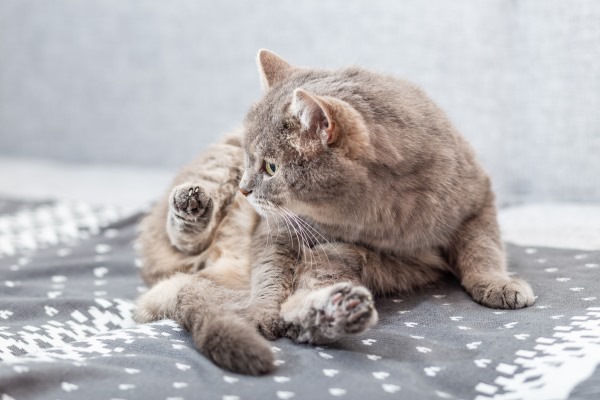
Cats may groom as a self-soothing behaviour; it can help them relax and feel calm. Grooming is also a way to regulate their body temperature – they may lick their fur to help cool down when they feel too warm. Finally, cats may groom as a way of marking their territory, by spreading their scent via their saliva, which helps them to feel more secure in their environment.
6. Courageous climbing
Cats love to climb! Climbing allows them to exercise and strengthen their muscles, to satisfy their curiosity and to get a better view of their surroundings. At home alone, kitty may climb on the furniture or fixtures, including bookcases, fridges, kitchen cabinets and curtains!
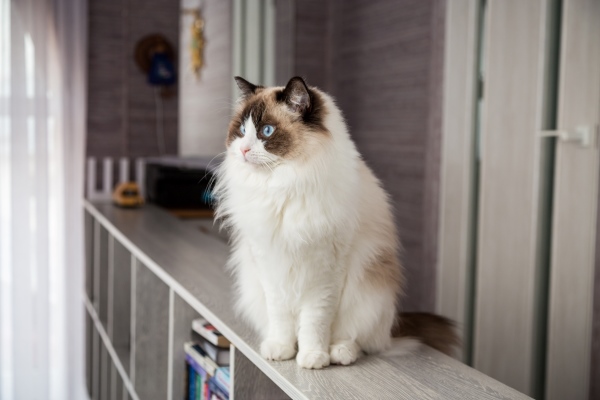
- DO provide safe climbing structures, such as cat trees, shelves, elevated cat runs and/or perches.
- DO make sure cabinets and bookshelves are firmly secured to the walls and are in no danger of toppling over if she climbs on them.
7. Habitual hiding
You may arrive home to find that your cat is nowhere to be seen. You spend the next hour looking under the furniture and inside every nook and cranny, and eventually find her squeezed into the tiny gap between your headboard and mattress, or tucked up in your wardrobe under a pile of clothes!
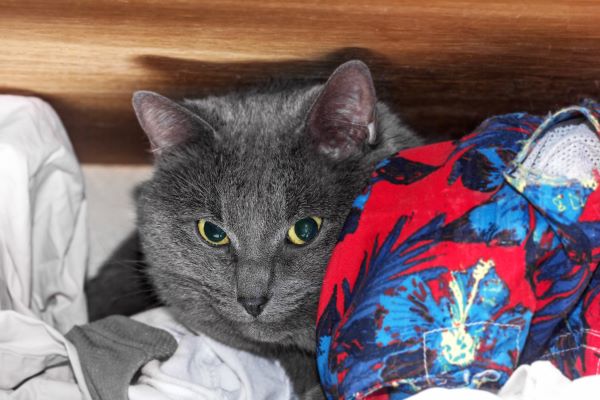
Hiding provides a sense of security and privacy in a quiet and secluded place where they can be alone and where they have a sense of control over their environment. Cats often hide to sleep, but they may also hide when they are frightened or stressed.
- DO provide your cat with a selection of different hiding spots, such as cat trees with buit-in caves or cubbies, cardboard boxes, cat beds with hoods, cat tunnels and tents.
8. Serious scratching
Cats have a strong drive to sharpen their claws, so they may spend some of their time scratching at things around the house. On the down side, they may choose to scratch – and destroy – the furniture or curtains.
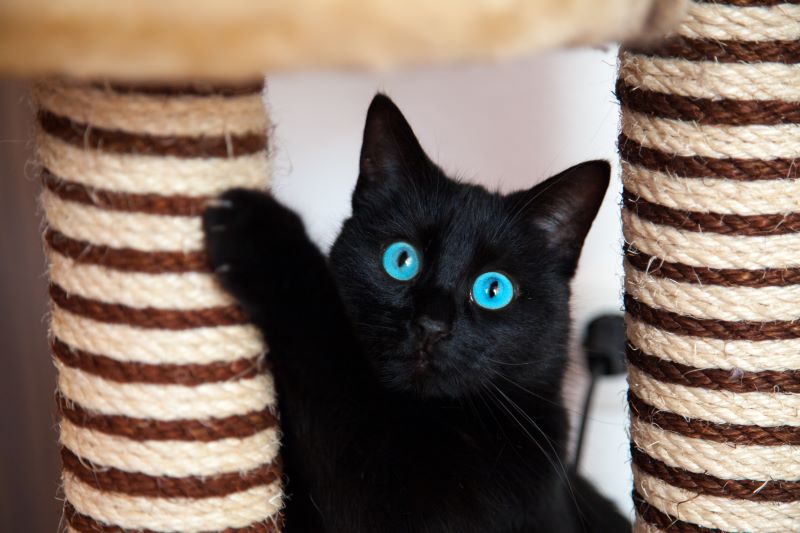
- DO provide appropriate scratching surfaces, such as scratching posts or cardboard scratching pads, to direct their scratching behaviour away from furniture or other household items.
- DO provide regular grooming, playtime and interactive toys which can help to keep them mentally and physically stimulated and reduce the likelihood of destructive scratching behaviour.
9. Strenuous stretching
Cat-cow anyone? The real “cat stretch” (cow-less, as performed by cats) entails extending their front paws out in front of them and reaching back with their hind legs, typically accompanied by a deep exhale, and usually expressing that kitty is feeling relaxed and content.
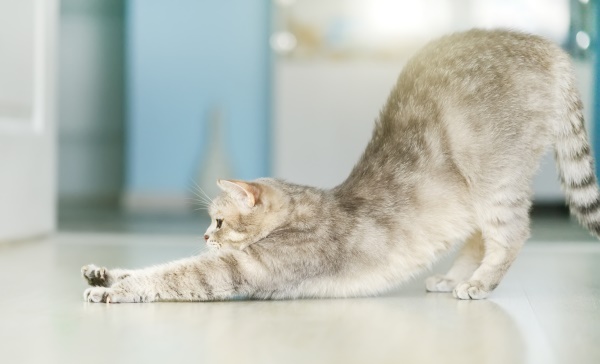
Stretching is a common feline behaviour that your cat may perform after sleeping, grooming or physical activity, or whenever she feels the urge.
10. “Outdoor” exercising
Some cats are perfectly content with an entirely indoor existence. However, if your cat likes spending time outdoors, there are ways to provide a safe and secure outdoor space where she can explore without endangering herself or the native wildlife. An outdoor cat enclosure or cat run provides a safe place where your kitty can enjoy the fresh air, sunshine, and sights and sounds of the outside world, and also have room to move and exercise.
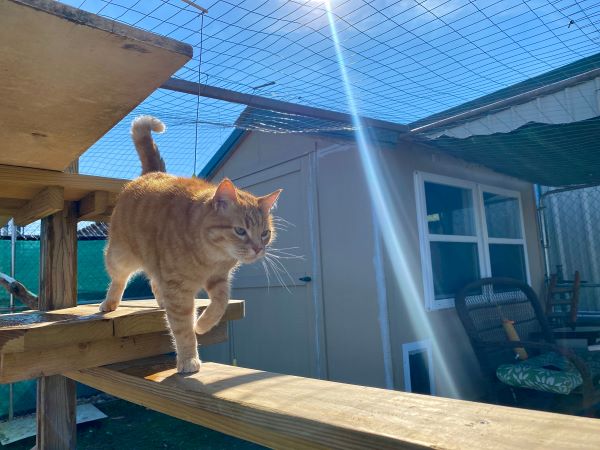
Whether you have a garden, backyard, veranda or balcony, there are options for providing a safe outdoor cat run or cat enclosure.
Some of things you can do to make the outside world accessible for your cat include:
- Installing new cat-proof fencing or cat-proofing your existing fencing
- Installing cat netting or screens around all or part of your garden, porch, balcony , side alley or window frames
- Purchasing or constructing a “catio”, or outdoor cat enclosure, with or without a cat run or tunnel to connect it to your house
- Building or installing an enclosed, tunnel-like cat run along a fence, around the side of the house or even across the roof.
Bow Wow Meow Pet Insurance can help protect you and your cat should an unexpected trip to the vet occur.
-
Find out more about our cat insurance options
-
Get an instant online pet insurance quote




